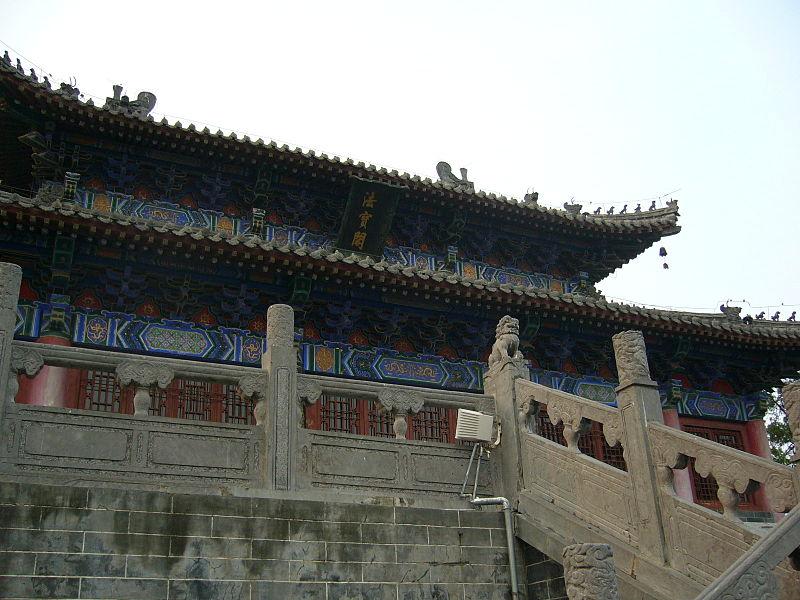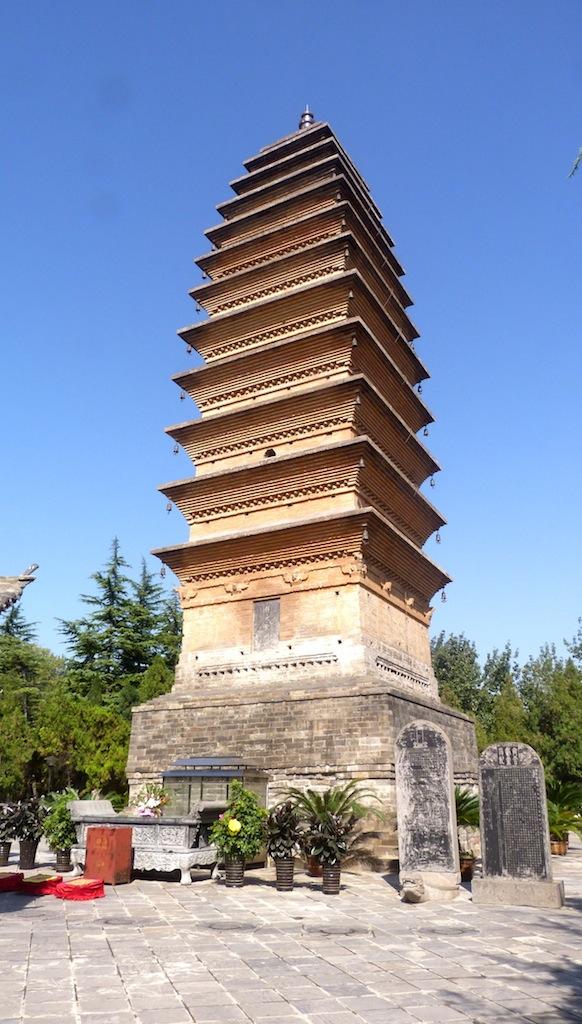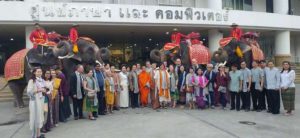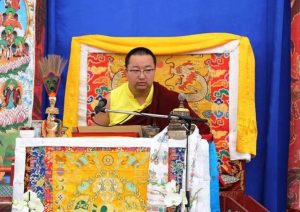He came from Arsakes
He came, his camel’s bells jingling,
Eastwards from enigmatic Persian lands.
He descended from his royal throne,
Sparrows twittering as his brick-red robe fell across the manifold waters and mountains.
He toiled through the desert’s golden sands,
Owning nothing after his colossal renunciation.
Cultivating a renunciant’s hopes,
He created the Buddhism of China through erudition, education, and translation.
He walked towards the great sea,
His compassionate eyes arresting blades of light.
The footprints of the past whispered his legend,
Spring came and the flowers were in bloom,
Samsara’s waves still murmured below the harbor of the secular world.
By Ven. Dao Ran
China was never a closed society, shut off from foreign influence until the eighteenth century. We now know that Chinese history’s cultural borders were open as early as the Shang and Zhou dynasties. When Indian Buddhism first arrived in China, its growth and Sinicization was based on three phases: the translation of scriptures (which began during the Han Dynasty), dissemination, and sectarian divisions (which reached their height during the Tang Dynasty). Crucial to the first phase were monks of Central Asian and Indian heritage, whose influence through the Han to the Tang was critical in shaping not only Chinese Buddhism but the Chinese understanding of Buddhism itself.*
The Parthian prince An Shigao (?w?@??) was probably the author of the first Chinese editions of the Buddhist scriptures (1). He was also the first translator to be mentioned in Chinese records.He was the heir to the Parthian throne before he became a monk, and claimed that he hailed from “Arsaces”, the name which every Parthian king called himself. The Parthian Empire covered the Iranian plateau and Mesopotamia, enjoying a close relationship with the Han Dynasty, thanks to their mutual dependence on the Silk Road economy (2).
An Shigao came to China alone in the early years of Emperor Huan, and he lived in Central China for twenty years. The Han Dynasty was the era of Zheng Xuan (?G?ȡFcourtesy name Kangcheng?d??), a great scholar of Confucianism, Kong Rong (?տġFcourtesy name ???|), and the warlord Cao Cao (????). The imperial court at Luoyang was particularly vibrant, but also dangerous. In the time of Emperor Huan and Ling, scholar-officials and aristocrats waged war against the dominant eunuchs. The ferocious intrigue and political unrest led An Shigao to travel around the country and spread Buddhism. He travelled widely all the way down to Guangzhou, dying in Huiji (?|?]) in present-day Suzhou (Ĭ?{), in the last years of Emperor Ling.
In total, An Shigao completed 35 faciles and 41 volumes with 22 faciles and 16 volumes extant. He was particularly interested in translating the Sarvastivada School’s Abhidharma Theory and pre-Mahayana texts. They include the An Bo Shou Yi Jing(?w???u?N?g), Yin Chi Ru Jing (?????J?g),the Abhidhamma (???i?褭?k???g), Shi Er Yin Yuan Jing (?̤G?]?t?g), Zhuan Fa Lun Jing (???k???g), Ba Zheng Dao Jing (?K???D?g), Chan Xing Fa Xiang Jing (?I???k?Q?g) and more (3).The most famous remains the An Bo Shou Yi Jing, which addressed the early breathing skill of anapana(inhaling and exhaling). The breathing techniques of Daoism(also called an bo, ?w??) at this time enjoyed a similar prestige as their Buddhist counterparts. An Shigao’s conscious translation of anapana into a Daoist term made the teaching more palatable to Chinese sensibilities. He took the initiative to translate Buddhist concepts into Daoist equivalents to make analogies, essentially beginning the long and complex ties between Buddhist liturgy and the Chinese language (4).This did, however, lead to later problems, when confused Chinese Buddhists questioned the quality of the translations. The desire to distinguish Buddhist practices from Daoist ones eventually led to the famous Xuanzang’s journey to India.
The work of An Shigao would greatly influence generations of Chinese masters. Vinaya Master Dao An (?D?w) of the Tang made no secret of his admiration for An Shigao’s translations. There was also a revival of Abhidharma theory in the Jin Dynasty, leading to the establishment of the Chinese Abhidharma School. Foreign monks like An Shigao left two more important legacies. Firstly, the early translations and liturgy owe their existence to the Chinese words these monks chose to replace the Sanskrit. Secondly, the Chinese Buddhist institution was forever defined in relation to the “Buddhist heartlands” of India and Central Asia. They were upheld as ideals of Buddhist practice before the Tang, but sidelined when the intellectual vibrancy of sectarian division began and Chinese rulers began identifying Buddhist pilgrimage sites within their empire’s borders. Xuanzang was the last of a generation of Chinese monks that looked to India as the epicenter of Buddhism.
Notes
(1) Lai Yonghai, Encyclopedia of Chinese Buddhism (Shanghai: Shanghai Classics Publishing House, 2000).
(2) Sima Qian, “Dawan Commentary Section” in The Historical Records(Shanghai: the Commercial Press, 1934); Ban Gu, edited by Xu Song, Han Dynastic History (Beijing: Zhonghua Book Company, 1985).
(3) Dao An, The List of the Sutras (CBETA, 2010), T 55, no. 2147.
(4) Lai Yonghai, The Chinese Buddhist Culture (Beijing: China Renmin University Press, 2007).
* Non-Chinese monks that preceded the Chinese patriarchs were: An Shigao (? – 168), Lokakshema (146 – ?), Sanghavarman (3rd century), Kumarajiva (344 – 413), Kalayasas (383 – 442), Dharmakshema (385 – 443), Gunabhadra (394 – 468), Dharmodgata (4th – 5th centuries), Dharmagatayasas (5th – 6th centuries), Mandra (5th – 6th centuries), Bodhiruci (5th – 6th centuries), Vinitaruci (? – 594), Divakara (613 – 687), Sikshananda (652 – 710), Dharmacandra (653 – 743), Pramiti (7th – 8thcenturies), Amoghavajra (705 – 774), and Prajna (734 – ?).








